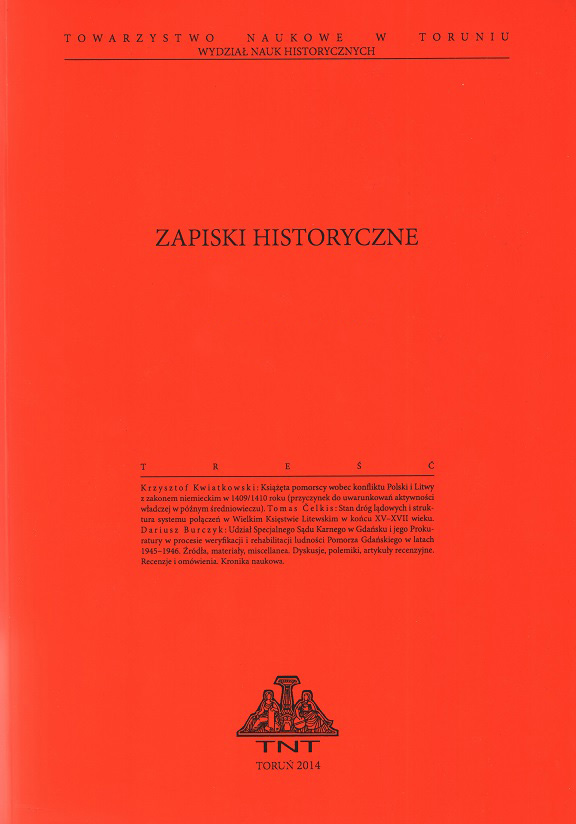Złotnicy w Chojnicach w XVIII wieku
Goldsmiths in Chojnice in the Eighteenth Century
Author(s): Bartłomiej ŁyczakSubject(s): Cultural history, Local History / Microhistory, 18th Century, History of Art
Published by: Towarzystwo Naukowe w Toruniu
Keywords: craft guilds; handicraft; art of the early modern period; goldsmiths; Royal Prussia
Summary/Abstract: The early modern goldsmithery in Chojnice (Konitz) has so far been outside the main area of scholarly research. The search in archives and libraries conducted for the purposes of the article, as well as the analysis of preserved works crafted by local masters, has therefore brought a lot of new, previously unknown information on the subject. Chojnice is a typical, small centre of goldsmithery, which remained overshadowed by Gdansk, a powerful hub of crafts located nearby. For nearly whole of the eighteenth century only a single workshop operated in the town, and a new master usually appeared only after the death of his predecessor. The research yielded information about five goldsmiths operating in Chojnice in that century, as well as one apprentice who died before becoming a master. Nearly all of them were connected by various family ties. Only a few works of art created in the Chojnice workshops were identified, but they bear the signatures of only two masters who were active in the last third of the eighteenth century. Johann Friedrich Felsch I (1744–1808) made several items for the churches nearby: an incense boat in Chojnice, a monstrance in Bysław, a monstrance base in Wiele and a reliquary cross in Tuchola, as well as a set of six spoons, currently stored in the collection of the Malbork Castle Museum. It is worth noting that his works, apart from the master’s mark, bore a sign that proved he was a member of the guild of goldsmiths in Malbork. Johann Gottlieb Jantzen (1742–1772), Felsch’s brother-in-law, delivered a monstrance to the church in Jeleńcz (now in Tuchola), and a frame for the worshipped statue of the Blessed Virgin Mary to the Bernardine Church in Zamarte (now missing). All these items represent an average level of artistry, and show considerable dependence on the style developed by the masters from Gdansk, where both goldsmiths active in Chojnice studied their craft.
Journal: Zapiski Historyczne
- Issue Year: 85/2020
- Issue No: 1
- Page Range: 187-202
- Page Count: 16
- Language: Polish

